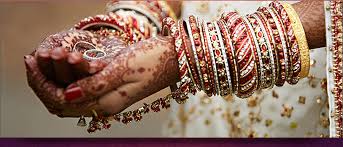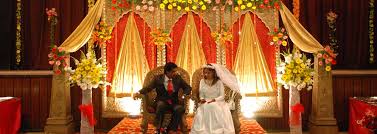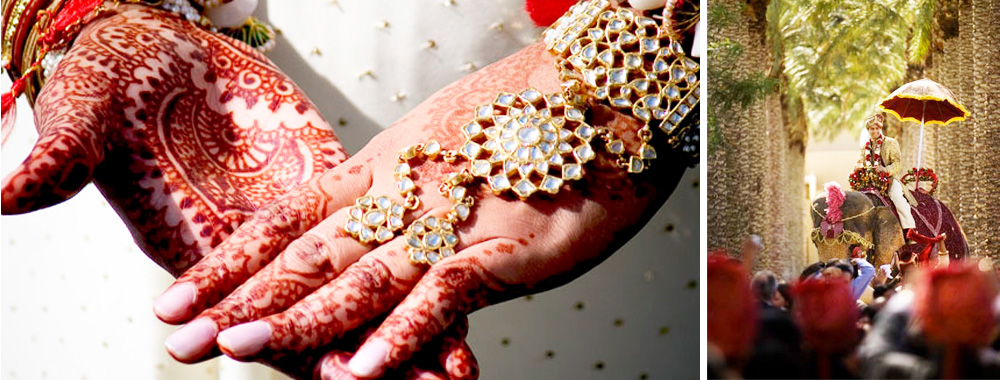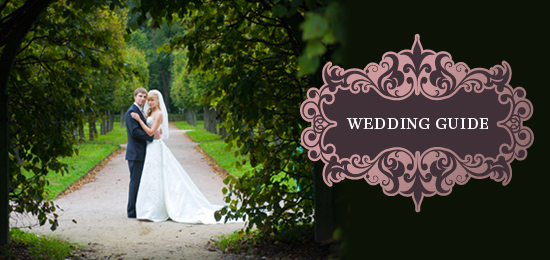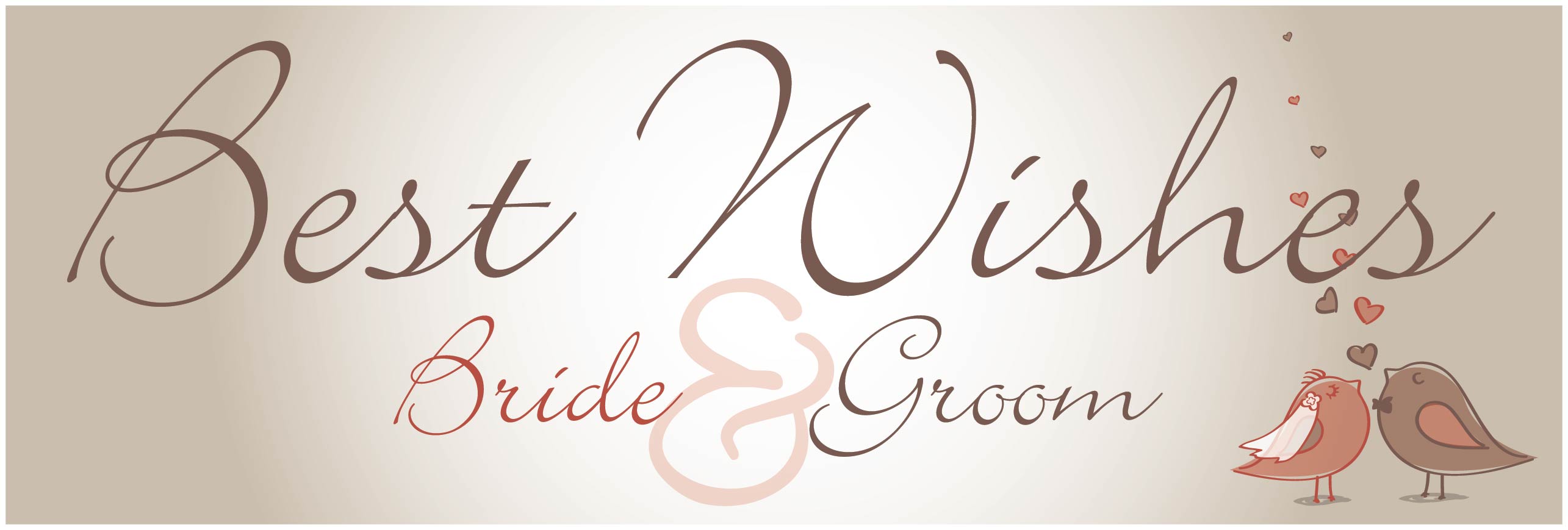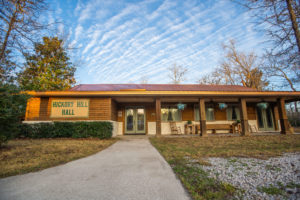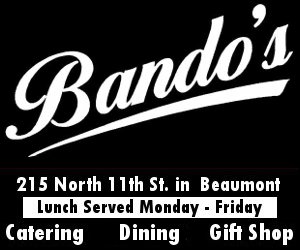Have you been invited to an Indian wedding in Southeast Texas?
The United States has long been known as an international melting pot. People from different cultures coming together and building a new nation. 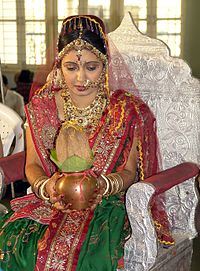
Southeast Texas for a long time seemed like less of a melting pot than New York City, Miami, or even nearby Houston and New Orleans. People in these cities are often not surprised when they are invited to a Jewish, Hindu, or Buddhist wedding ceremony. For those of us in Southeast Texas, we’re often less sure of what to expect.
It’s only in the last 20 years that Hispanics and Vietnamese have really started to have an influence in our community. In the last five years, these influences have grown stronger as these immigrant groups have really begun launching large numbers of small and medium sized businesses.
In addition, the petroleum industry has brought in many from India, Pakistan, China, Japan, and Central America as engineers and as skilled labor.
Indians, Pakistanis, and Asians have launched several successful hotels, individual convenience stores, retail stores, restaurants, liquor stores, ethnic groceries, and convenience store chains.
Southeast Texas may not yet look like New York City or Miami, but it is becoming more of a true multi-cultural melting pot.
Each new culture assimilated into Southeast Texas brings its own cultural nuances- including unique wedding traditions.
Wedding halls, hotel banquet facilities, and community centers are hosting more and more Southeast Texas wedding ceremonies that would look very different from what most Southeast Texans are used to.
This week, we’ll take a small look at Indian Weddings with Hindu ceremonies, Southeast Texas style. Hinduism is the dominant religion in India. Hindus are generally respectful of other religions, so India is also home to hundreds of thousands of Muslims, Christians, Buddhists, Jains, and Jews.
If you are invited to a Hindu SETX wedding, this will give you a little bit of an idea of what to expect.
– Guest Dress. Many attendees will wear traditional Indian outfits. For men, this is loose fitting shirts and pants often made of silk. For women, this will often be the sari which is one piece of silk elaborately wrapped until it becomes a dress of sorts. Other attendees will wear suits, nice dresses, and even tuxedos. If you’re invited to a Hindu wedding, wearing a suit for men and a dress for women is just fine.
– Groom’s Dress. The groom’s outfit will be a much more elaborate version of the traditional outfits his guests are wearing. Sometimes they groom will wear a hat that looks like a turban. It is purely ceremonial. He will also sometimes where curved slippers that look like something out of Aladdin, but again purely ceremonial. 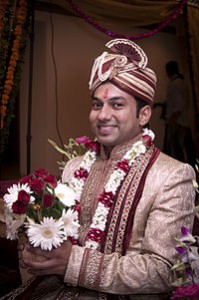
– Bride’s Dress. The bride’s outfit is particularly elaborate. And heavy. Typically a bride will wear a red silk outfit that often ways more than 20 pounds. We went to one Southeast Texas Hindu Wedding where a ninety pound bride wore a twenty-five pound outfit. Then there is the jewelry- lots of jewelry. Traditionally a bride would wear her dowry. While a bride in the U.S. typically will not technically have a dowry, she still will wear lots and lots of gold. The gold is typically 22 carat rather than the 14 carat we normally wear in the U.S. Gold bracelets or “bangles”. Gold and diamond earrings, gold chains connecting gold earrings or ear cuffs to gold nose rings. Gold and diamond finger rings. Gold ankle bracelets. A bride can literally wear tens of thousands of dollars in jewelry. This is wedding jewelry only, typically it will remain in a safety deposit box after the wedding until it is time to pass it on to the next generation.
– Ceremony. The last several Christian SETX weddings I’ve attended have had SHORT ceremonies. Hindu weddings are different, typically lasting for hours. Guests come in and out. Away from the ceremony, people talk and catch up about mutual friends and acquaintances. People will even have snacks or get a drink as the ceremony slowly progresses. Guests typically have a pretty good idea of when the important parts of the ceremony will come and they’ll drift back into the room in time. The bride and her family will typically be at the wedding venue first. The groom’s family will meet somewhere nearby and make a spectacular entrance. The groom will often be led into the ceremony on a horse. If one can be located, the groom may even arrive riding an elephant.
The groom’s family will generally be accompanied by one or more skilled- and loud- drummers. The groom’s family will typically dance and clap as they make their way to the wedding venue. When the groom and his family arrive, the bride’s family will often make symbolic gifts of welcome. Think of it as the bride being in one village and the groom’s family arriving from another village. When the bride and groom come into the ceremony there are a number of prayers. Sanskrit is used (think Latin in a Catholic ceremony) as is the dialect of the bride and groom (Hindi, Gujarati, etc. Regional languages of India) and there are often English segments to bring guests up to speed. There is usually a fire ceremony and often a rope ceremony. Essentially the bride and groom are purified and then joined in matrimony. There will be a gazebo like structure set up under which the ceremony will be conducted.
– Reception. Indians pride themselves on being good hosts. There will be plenty to eat. At some Hindu weddings, particularly with more recent immigrants, all of the food will be prepared by the family. More commonly these days, a top Indian restaurant out of Houston will cater the wedding. The food will most often be buffet style with a half dozen or even a dozen dishes to choose from. Often the food will be vegetarian, even if the person getting married isn’t. This is similar to the friend who’ll offer you a beer if you are over to watch the game, but who won’t if his grandmother is over for a visit. Speaking of alcohol, some Indian weddings will have an open bar. Others will be “dry”. This generally is dictated by the beliefs of the couple’s parents. Expect lots of dancing. Music is upbeat and it is not uncommon for DJs to mix Indian and American music for a really fun dance mix. Often dancing will go on well into the night. It’s not uncommon for an Indian wedding to start around noon and the reception to end around 2AM.
– Gifts. It is most common at a Hindu ceremony that guests will give cash rather than a gift from a registry. If you’d like to do the same, just remember to add a dollar to the amount you’d normally give. $51 dollars rather than $50. $101 dollars rather than $100.
– Crossover. One aspect of Indian weddings has been picked up by young American women. The use of Henna to provide temporary tattoos. Look for a future SETXweddings article on Henna.
Have you been to an interesting wedding with elements from an immigrant culture? Share your stories and photos with SETXweddings.com by e-mailing setxweddings@gmail.com.
You can also post them to our SETX Weddings Facebook page.
We hope today’s introduction to Indian Weddings in Southeast Texas has been helpful.
- Daryl Fant, Publisher. SETX Weddings
- (512) 567-8068
- SETXWeddings@gmail.com
Are you looking for more Southeast Texas wedding news?
Stay tuned or “Like” SETX Weddings on Facebook to receive the latest from around the Golden Triangle wedding community.


